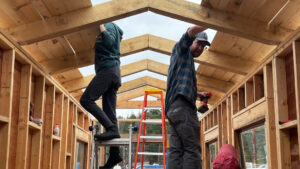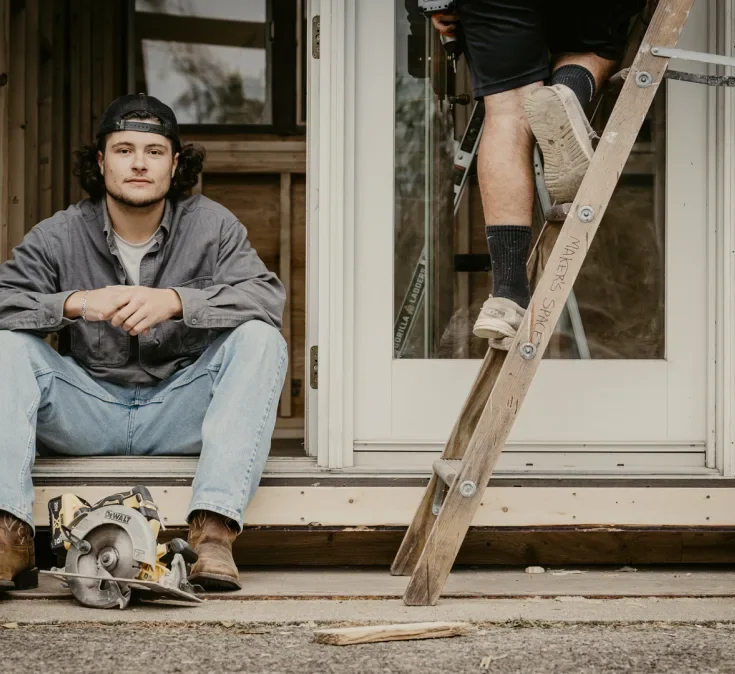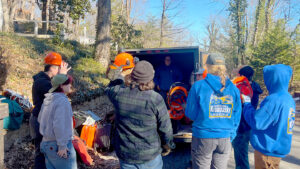
In his last semester at college, in between studying labor law and environmental impact assessment, Alex Elderbroom took a class on something very different: how to build a tiny house.
In the class, at Paul Smith’s College in upstate New York—a school that mixes traditional academics with more practical courses—a small group of students spent three months last fall going through each step of the construction process, from planning and purchasing materials to building basic furniture for the finished 8-by-10-foot space.
Elderbroom, who just graduated, happens to already rent a tiny cabin. He was interested in learning how to build one of the homes himself. “It seems like a good set of skills to have,” he says. “And I feel like it’s a type of living that’s more rewarding than having a big house.”
He had some construction experience, but others started from scratch. “Sometimes, it wasn’t apparent that some of them had even held a hammer before,” says associate professor Deb Naybor, who teaches the class. “So we started a very basic support safety training, just showing them techniques.”
“It’s a life skill,” says Derek Grant, a senior majoring in natural resources management. “Anybody would benefit from learning it.”
It’s not the only college with a tiny house class. Laney College, in California, also has a tiny house program. But Naybor now plans to take the idea a step farther. In a future version of the class, students will have the opportunity to buy materials so they can each build a tiny house on wheels of their own—and take it with them when they graduate.
“I always joke with the parents that if things don’t work out and [the students] don’t get a job right away, they can move the tiny house into their parents’ driveway and live there until they find a good job,” she says.
Even in the school’s remote location in the Adirondack Mountains, rents in the nearest town can be hard for students to afford, says Elderbroom. Nationally, rent is unaffordable for around half of all tenants, according to a Harvard report from January. For recent graduates who may not immediately land a lucrative job, the challenge is even greater.
The basic structure that students built last semester cost only around $2,800 in materials, though it didn’t include a kitchen and a bathroom. A fully livable home could potentially cost between $5,000 and $6,000, Naybor says, if students do the labor themselves. (She also notes that the cost of tiny houses varies hugely: something with luxury finishes in an expensive Bay Area city might cost as much as $300,000.)
Though the houses can be cheap to build, zoning is a challenge. Some states and cities have embraced accessory dwelling units (ADUs) as part of a solution to the housing crisis. Other locations still haven’t, and only a handful of cities allow tiny houses on wheels. Finding land for a tiny house is another challenge, assuming that a recent graduate’s new job doesn’t happen to be near a relative with extra backyard space.
Naybor advocates both for tiny houses as ADUs and for tiny-house villages that can host multiple homes. She also argues that more people should rethink their conception of what a home should look like, and how expensive it has to be. “The average American house is $420,000 right now,” she says. “Young people would have to be making $100,000 a year to get a 30-year mortgage, never mind coming up with the down payment . . . you could live in a tiny house and pay it off in 10 years.”
She lives in a $50,000 tiny house herself, and takes her classes to visit it. “I say, ‘This could be a choice for you, rather than feeling like you have to grow into the same house you grew up with,’” she says.

ABOUT THE AUTHOR


